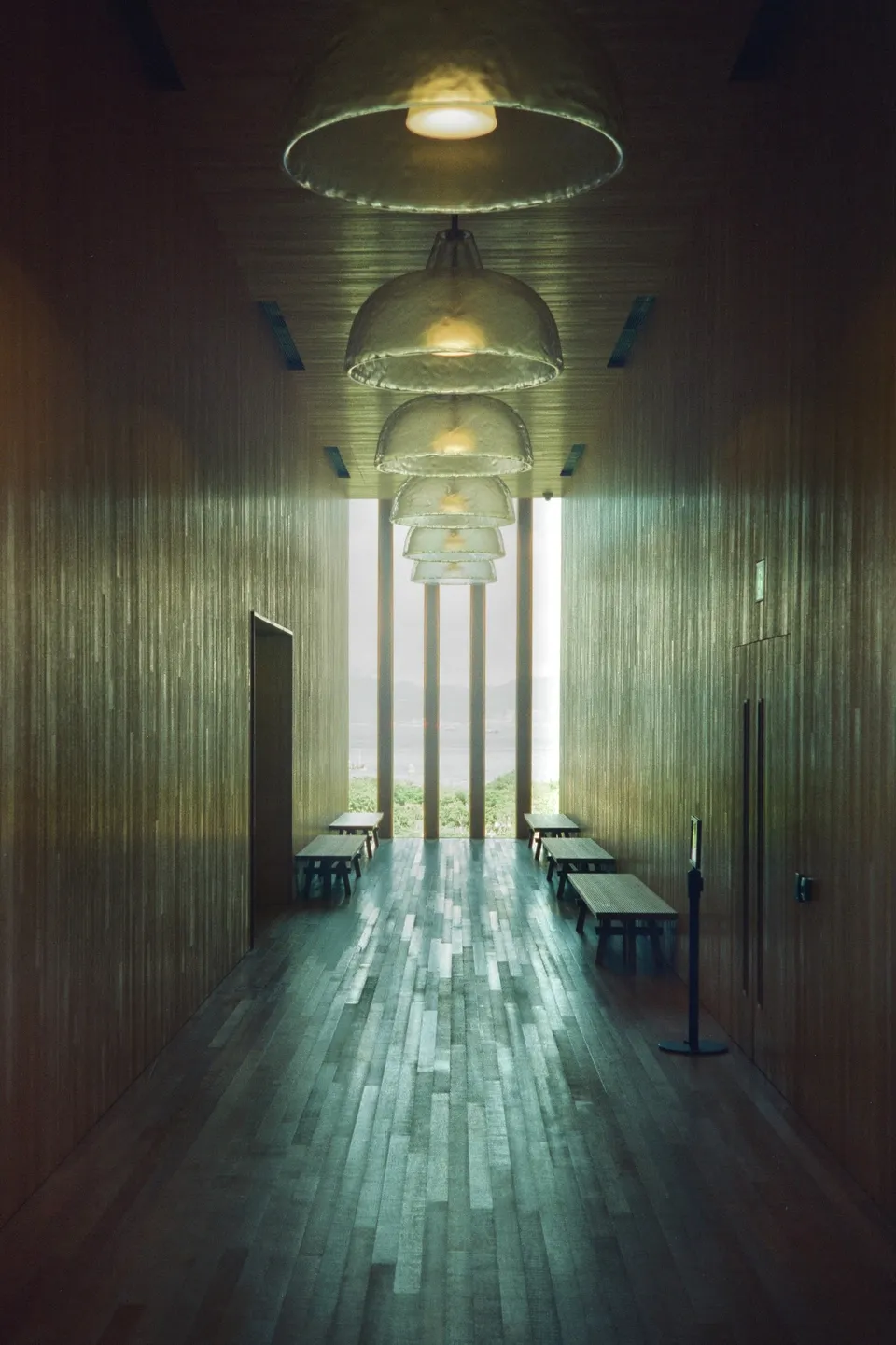Olympus 35RC
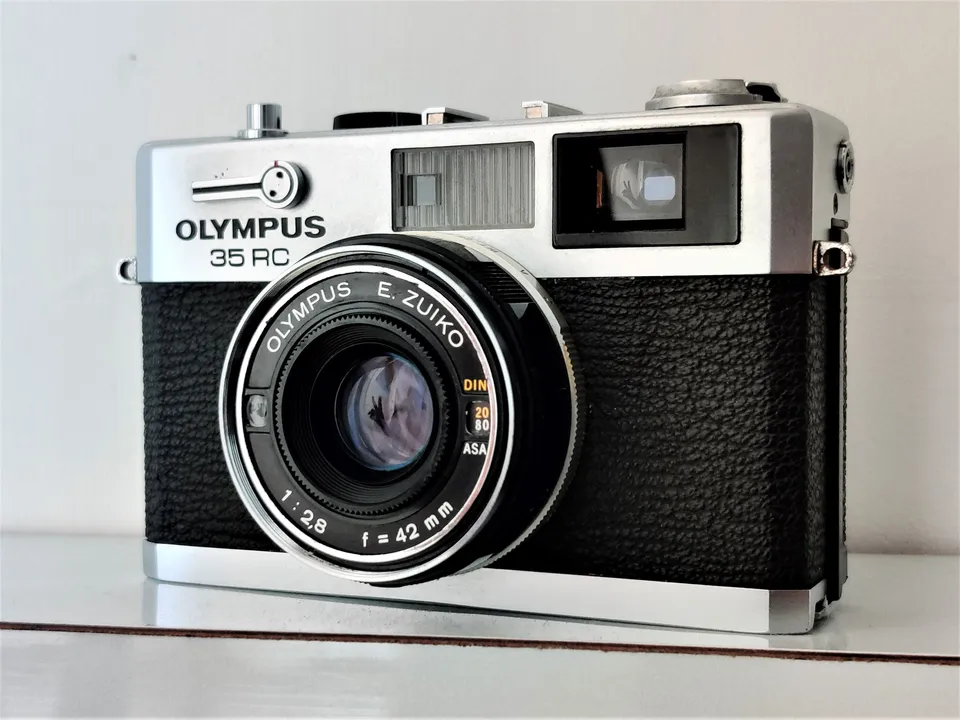
When your needs and desires are not in line with each other, you will end up getting what you did not want.
— Simone Salis
I was talking to the seller who sold me the mechanical self-timer and he was considering to buy an Agfa Optima 1535. That camera is quite rare and the listings you can find are generally overprized. He commented that an Optima 1535 at HK$2,000 is over-prized and I wasn't convinced. One part confirmation bias to my purchase and one part I like the camera so much I truly believed it's worth the price.
Then I discovered Olympus 35SP
| Feature | Agfa Optima 1535 | Olympus 35SP |
|---|---|---|
| Lens | Tessar-type Solitar S f/2.8 | G.Zuiko f/1.7 |
| Shutter | Electronic | Mechanical |
| Automatic Mode | Fully automatic | Shutter priority & Full manual |
Take me back to before buying Agfa Optima 1535 I may have chosen 35SP over Optima 1535. But no, Optima 1535 is more compact than 35SP…
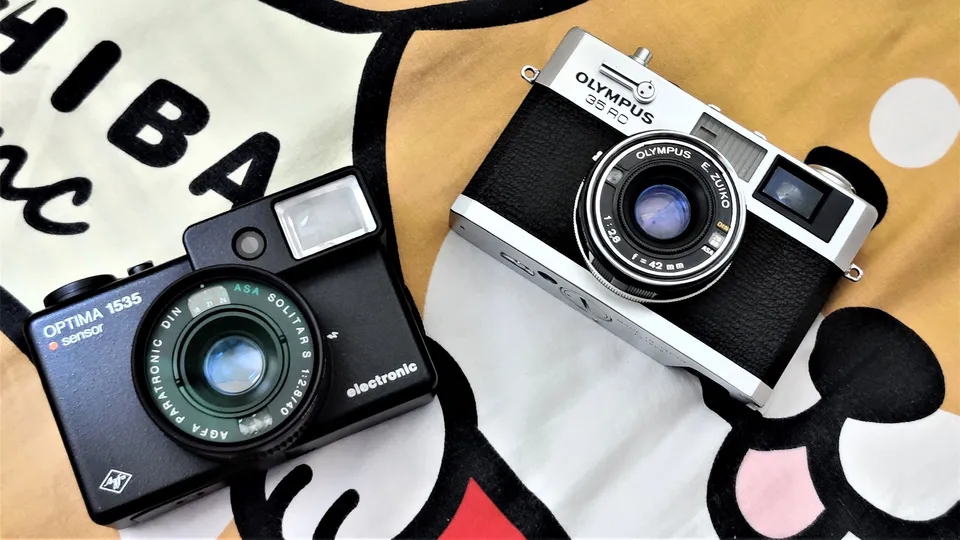
Oh wait there's Olympus 35RC and 35DC. DC stands for Deluxe Compact, featuring auto-exposure like Optima 1535, with a bigger aperture F.Zuiko f/1.7 lens. Not sure what RC stands for, like Rangefinder Copmact? 35RC has a E.Zuiko f/2.8 lens—Sonnar-type instead of Tessar-type like Solitar S. Consider 35RC a smaller version of 35SP, both featuring auto and manual exposure. Basically, 35RC features the same form factor as Optima 1535 and an added manual mode.
| Feature | Agfa Optima 1535 | Olympus 35RC | Olympus 35DC |
|---|---|---|---|
| Lens | Solitar S f/2.8 | E.Zuiko f/2.8 | F.Zuiko f/1.7 lens |
| Shutter | Electronic | Mechanical | Electronic |
| Automatic Mode | Fully automatic | Shutter priority & Full manual | Fully automatic |
I don't really know if more elements means better image quality (especially given the condition of my copy, more on that later). Optima 1535 has been making me very happy and I love it.
I know, I sound like some boyfriend explaining himself after having stared at other girls on the street.
To tip the balance back in favor of Optima 1535, note the limited shutter speed options (B, 1/15-1/500) of 35RC, while no battery is required. Mechanical shutter requires additional gears for slow speed actions, and I guess Olympus omitted them to save space (you do get down to 1s on the bigger 35SP). Optima 1535 however, has a much wider range of 15s-1/1000, no Bulb mode, battery required.
35RC requires some care in setting the proper ISO speed when a 1.5V LR44 is used. As a rule of thumb I go down 2 stops on 35RC (i.e. set ISO to 50 for an ISO 200 film), cross-checking with the light meter on my phone. On Optima 1535, I can simply set the ISO to the ISO of whatever film I use, perhaps it's been modified to accept 1.5V or the CdS sensor itself has deteriorated and requires higher voltage to operate.
At first I didn't need this camera. No, I never needed it. However once I learned of this camera I couldn't put away the idea of owning one, and comparing it with my Optima 1535. What if I go travelling, and the camera run out of battery? On Optima 1535 I cannot change battery without opening the back, while on 35RC I can either go full manual or change the battery from the bottom.
There's this camera shop I have always wanted to visit, and there's a Olympus 35RC on sale at good price. So I went there with my friend to check it out. After checking it appears to be fine, except that the filter thread is dent (which means no filter, and possible mechanical trouble). I really did my best to resist and used that as a reason to not buy the camera.
You say you won't buy today, later you'll buy it online.
— friend of mine
Alas, he was quite right.
Like the Ikonta 520, I wasn't reading the description detailed enough and missed to note that the Japanese loves to downplay any flaw of the camera.
Like this fingerprint in the middle element.
And you need to be aware while the Japanese love to disassembly the camera for cleaning, some of them don't put the camera back properly.
Like this mask that's flapping inside the chamber that I had to glue back on.
Well, I couldn't have seen it from the description and the photo so not my fault (?).
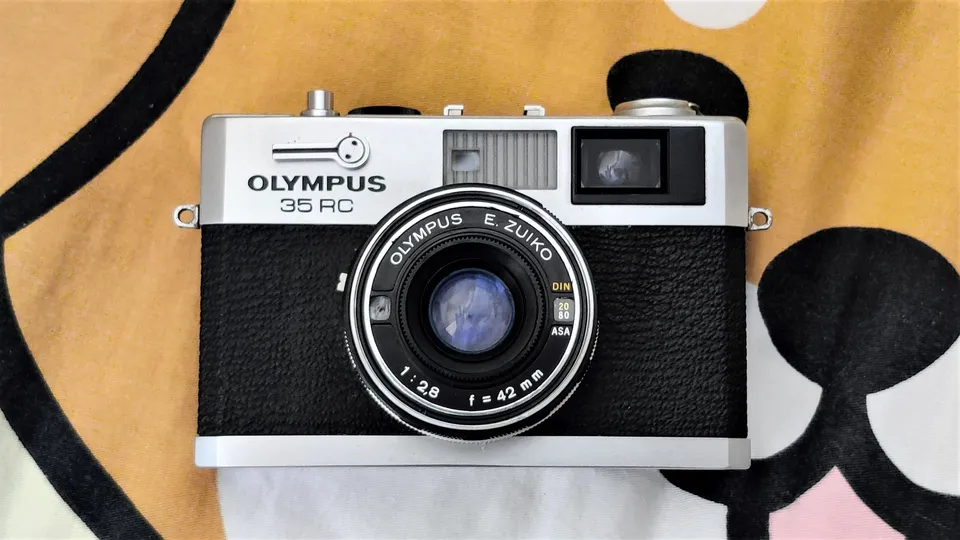
Now about the actual use of the camera. As opposed to the compact appearance, the camera is rather heavy to carry with a strap on the neck. I'd carry it without a strap or wear the strap on my shoulder when shooting outside. Handling is similar to Japanese cameras of the period, crank the film advance lever to also cock the shutter, turn the focus knob and eventually press the shutter release to shoot.
The film advance lever is short and takes a bit of force to operate, somehow reminds me of the advance lever on my Voigtlander Bessa R3A. On my copy of the camera, it had been disassembled and cleaned up before, causing the spring inside the film counter to either weakened or mis-aligned, so the film counter doesn't reset unless the count is at 36 or above when opening the back.
This camera comes with 2 modes: shutter priority auto-exposure or full manual mode. There's a thin ring between the body and the lens to switch between OFF, AUTO, and different apertures in manual mode. Rather badly positioned because the ring is too thin to get a good grip for turning. Bi-directional shutter speed dial is located on top of the camera that sets the speed for both auto and manual mode.
Voigtlander Bessa R3A has aperture priority instead of shutter priority. After using Olympus PEN EE2 which always seems to hopelessly choose a wide aperture at even slightly low light scenario, I'd say camera having aperture priority mode gives more control over the image produced. But the same can really be said for shutter priority mode when dealing with different scenario and subject.
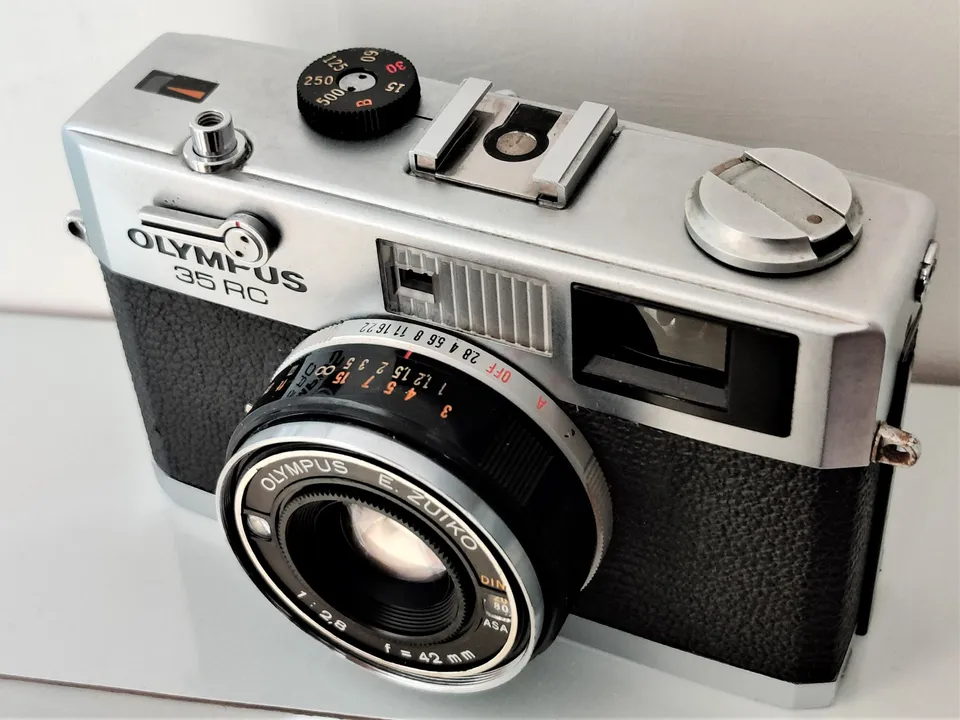
To set camera focus turn the focusing ring on the lens such that the coupled rangefinder images align on the viewfinder, which is bright and big enough for users wearing eyeglasses. There's a bluish tint in the viewfinder like on my example of Mamiya Press Super 23 which I dislike very much. Agfa Optima 1535 on the other hand has big, bright and clear finder. My other complain about 35RC's focusing mechanism is lack of depth-of-field markings on the lens. Even with a coupled rangefinder it's important to have the DoF markings on a manual camera such that user can pre-focus or account for infrared focus shift.
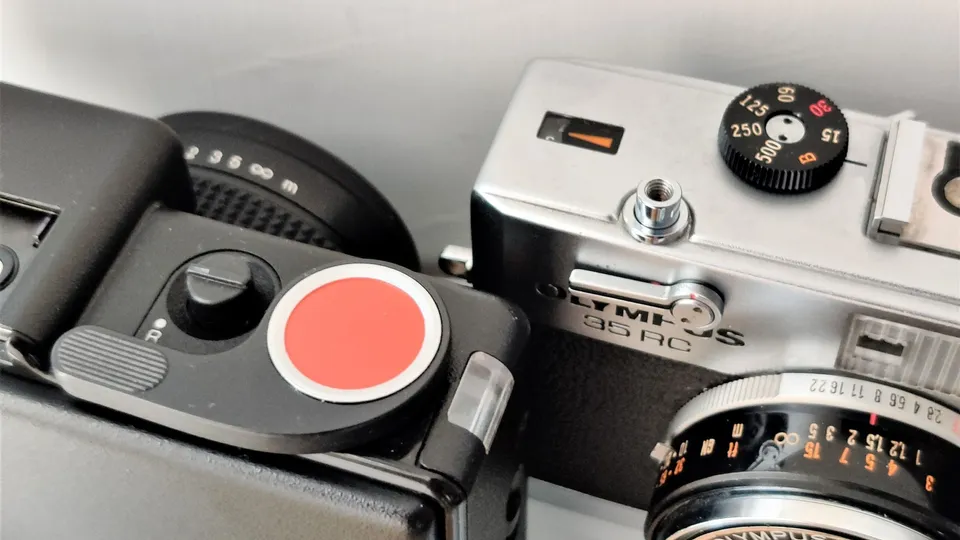
The shutter release is rather heavy, perhaps because of the electro-mechanical aperture control that's used not only in this camera, but many Olympus cameras with automatic exposure in the era, say, PEN EE2 and 35DC to name a few. Pressing down the shutter release shows the 4-blade aperture opens to the extend allowed by the autoexposure system before the shutter is triggered. This system seems simple and reliable enough for Olympus to build, whereas personally I favor the "red dot" shutter mechanism (formally "sensor point shutter release system") of Optima 1535 where the shutter can be released with very light force.
There's nothing to complain about image quality of the E.Zuiko lens—sharp and clear with no distortion near the edges. The focus was spot-on as well, thanks to the re-adjusted rangefinder.
If the seller would remember to clear that fingerprint at the middle element that'd have been perfect. Not that I have seen visible artifact on the image because of such defect.
Another defect on this camera was the image mask between the lens and the film: a piece of non-reflective thin metal with a rectangular opening ensure only image of a correct size of is casted onto the film. That piece wasn't glued on properly to it was flapping. As a temporary measure I used blu tack to stick the piece up, it seemed to be holding so far.
Perhaps I have dealt with too many flawed cameras, there's little to say about 35RC that it performs brilliantly on every situation I have thrown at it. I have only used this camera to shoot two roll of film, one Neopan Acros II and one Vision3 500T, both coming out with satisfying results.
When it comes to travelling, I will be pretty split between the two cameras. On one hand I want to keep it light by packing the Optima 1535 weighting only 260g as opposed to 35RC's 415g, on the other I want the best image quality possible and 35RC has shown to be superior over Optima 1535 in that particular department. Or, I choose the Olympus 35DC, which is bulkier, heavier, yet features the best image quality in the trio…
When your needs and desires are not in line with each other, you will end up getting what you did not want.
— Simone Salis
Problem is I don't know what I need. All these cameras seem like a good idea to have and fulfill one niche need of mine while not quite good enough to beat the competitions in my collection. A "perfect" camera that checks all boxes and beats all competitions probably doesn't exist.
Maybe I should just bring the "Good enough" Olympus PEN EE2 and stop worrying about all these…

